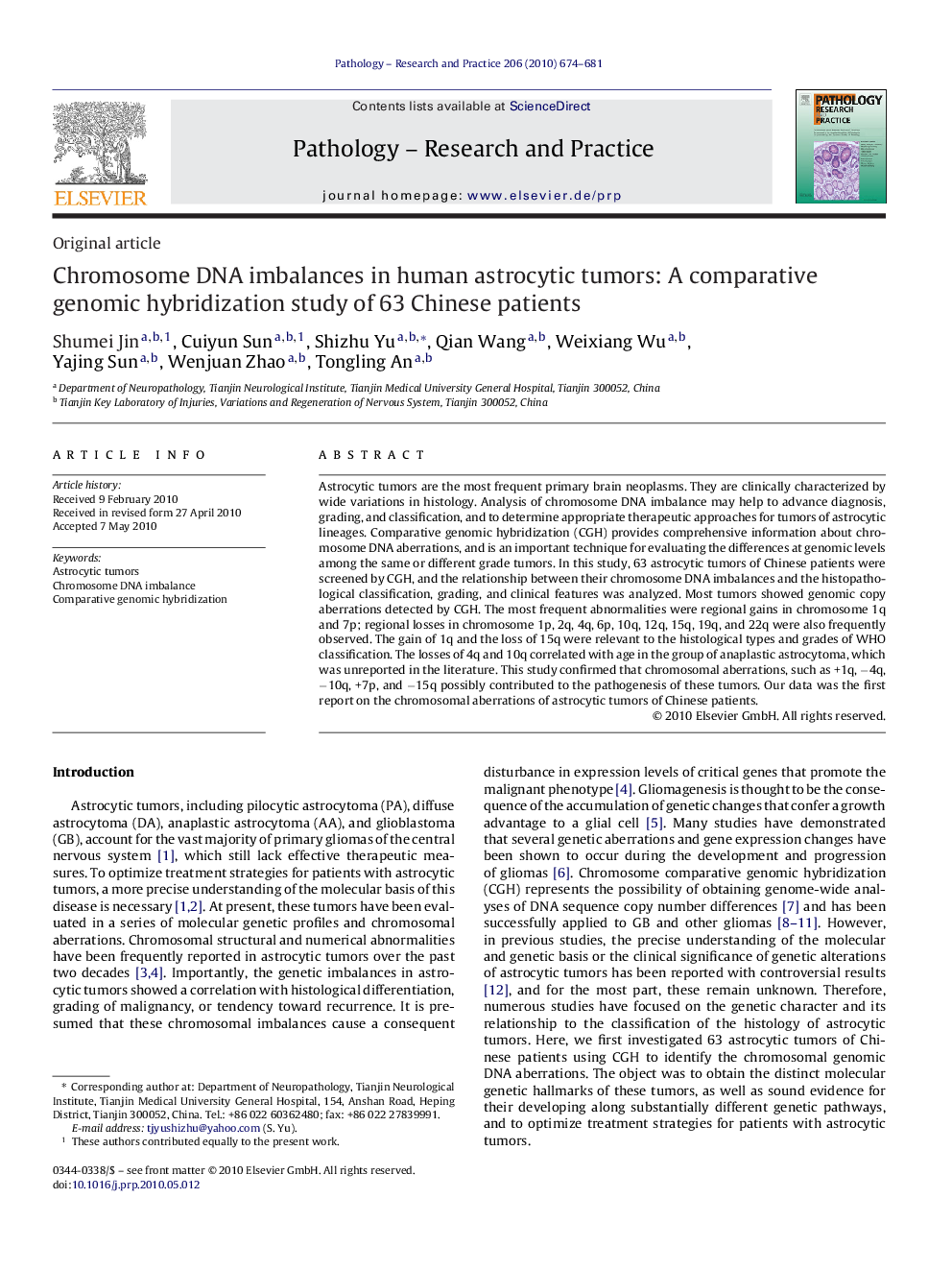| Article ID | Journal | Published Year | Pages | File Type |
|---|---|---|---|---|
| 2156155 | Pathology - Research and Practice | 2010 | 8 Pages |
Abstract
Astrocytic tumors are the most frequent primary brain neoplasms. They are clinically characterized by wide variations in histology. Analysis of chromosome DNA imbalance may help to advance diagnosis, grading, and classification, and to determine appropriate therapeutic approaches for tumors of astrocytic lineages. Comparative genomic hybridization (CGH) provides comprehensive information about chromosome DNA aberrations, and is an important technique for evaluating the differences at genomic levels among the same or different grade tumors. In this study, 63 astrocytic tumors of Chinese patients were screened by CGH, and the relationship between their chromosome DNA imbalances and the histopathological classification, grading, and clinical features was analyzed. Most tumors showed genomic copy aberrations detected by CGH. The most frequent abnormalities were regional gains in chromosome 1q and 7p; regional losses in chromosome 1p, 2q, 4q, 6p, 10q, 12q, 15q, 19q, and 22q were also frequently observed. The gain of 1q and the loss of 15q were relevant to the histological types and grades of WHO classification. The losses of 4q and 10q correlated with age in the group of anaplastic astrocytoma, which was unreported in the literature. This study confirmed that chromosomal aberrations, such as +1q, â4q, â10q, +7p, and â15q possibly contributed to the pathogenesis of these tumors. Our data was the first report on the chromosomal aberrations of astrocytic tumors of Chinese patients.
Related Topics
Life Sciences
Biochemistry, Genetics and Molecular Biology
Cancer Research
Authors
Shumei Jin, Cuiyun Sun, Shizhu Yu, Qian Wang, Weixiang Wu, Yajing Sun, Wenjuan Zhao, Tongling An,
